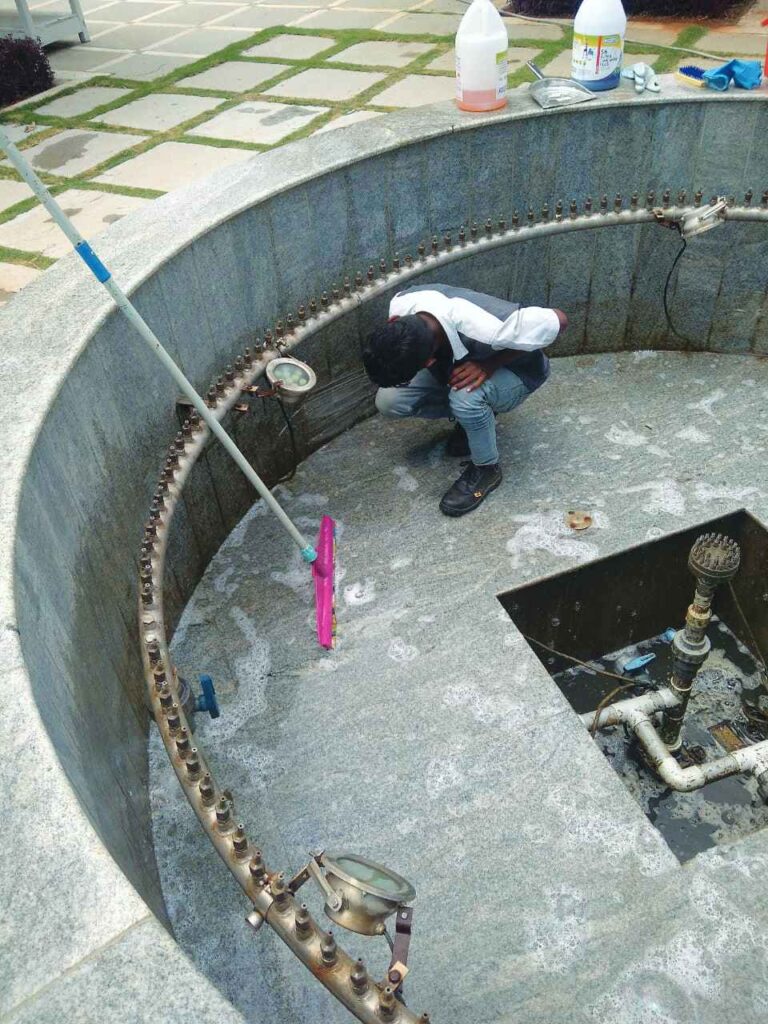
Maintaining religious spaces requires a delicate balance of cleanliness, cultural sensitivity, and logistical coordination. It involves understanding the unique requirements of different areas, implementing effective maintenance strategies, disaster & preventive management and working closely with various agencies to preserve both the sanctity and functionality of these spaces, says Vinay R Deshmukh, Executive Director & CEO at FFServices Pvt Ltd.
One of the first considerations in maintaining religious spaces is understanding and respecting religious sensitivities. Different sites have specific restrictions based on religious beliefs. This could include entry restriction for certain individuals, materials & methods used for cleaning or even use of traditional methods of cleaning. For example, at one site marble flooring is washed with milk instead of cleaning chemicals!
Logistics and Movement Planning
Efficient logistics and movement planning are critical in religious spaces to ensure smooth operations and avoid bottlenecks. Clear passageways and designated areas for movement must be established. For instance, if trucks and other vehicles deliver supplies, there should be designated entry and exit points to prevent congestion. All personnel involved must undergo police verification and medical checks. CCTV monitoring and communication devices like pagers or wireless radios should be used to handle emergencies effectively. These measures are essential to maintain order and safety.

Specific Cleaning Needs
Religious spaces require continuous cleaning, with particular attention to the type of facility — whether it is a heritage site or a modern establishment. Heritage sites often have restrictions on the use of certain chemicals to preserve historical materials. For example, the Archaeological Survey of India (ASI) might restrict the use of machines on historical marble to prevent erosion. In contrast, modern religious facilities, such as ISKCON, which often use materials like marble, require different maintenance approaches. Understanding the facility’s specifics before initiating cleaning is crucial to avoid damage and ensure effective cleaning.
To address inconsistencies, Standard Operating Procedures (SOPs) must be established. SOPs ensure that all agencies involved in maintenance follow consistent guidelines for cleaning, specifying what needs to be cleaned, how it should be done, and what areas are off-limits.
Washrooms and High Traffic Areas
Washrooms in religious spaces, particularly those with high foot traffic, require frequent cleaning. Mobilizing cleaning services effectively includes dispatching cleaning personnel and ensuring continuous maintenance. Additionally, water availability must be considered, as it is often a significant factor in cleaning processes.
Challenges in Restoration
Restoration work in religious spaces must balance preservation with accessibility. Some areas may require restoration due to wear and tear, but access may be restricted to prevent further damage. For example, in Jaipur palaces, doors adorned with jewels have been stripped over time, necessitating restoration and restricted access to prevent further loss.

Hospitality and Hygiene
Ensuring visitor comfort is crucial, especially in religious spaces that attract large crowds. This includes providing essential amenities like drinking water, which is mostly missed out in high traffic religious spaces. Further, while many locals might be comfortable drinking water from a tap, international visitors may prefer packaged drinking water. Hence, availability of such facilities is essential.
Kitchen Maintenance
Large kitchens in religious spaces need regular deep cleaning to maintain hygiene. Over time, layers of oil and ghee accumulate, making cleaning challenging. Maintaining these areas is critical, especially as thousands of people are served food daily from these kitchens. One possible solution is to create additional spaces where sections can be closed off for deep cleaning without disrupting ongoing activities. For example, Shirdi Saibaba Sansthan uses standby machines to ensure uninterrupted service while cleaning is carried out.
Safety Measures
Conducting thorough audits for exits, stairways, and railings is essential to prevent accidents. Implementing mandatory safety practices, such as holding railings while using stairs, may be necessary to ensure visitor safety. For example, some places might require visitors to follow specific safety protocols to prevent accidents.
Meanwhile, studying successful models can provide valuable insights. For instance, one of the big mosques in the Gulf uses lifts mounted on vehicles for maintenance, ensuring safety and efficiency. Similarly, the Vatican City continuously restores different areas in cycles, maintaining the site’s integrity throughout the year.
 CIJConnect Bot-enabled WhatsApp
CIJConnect Bot-enabled WhatsApp









